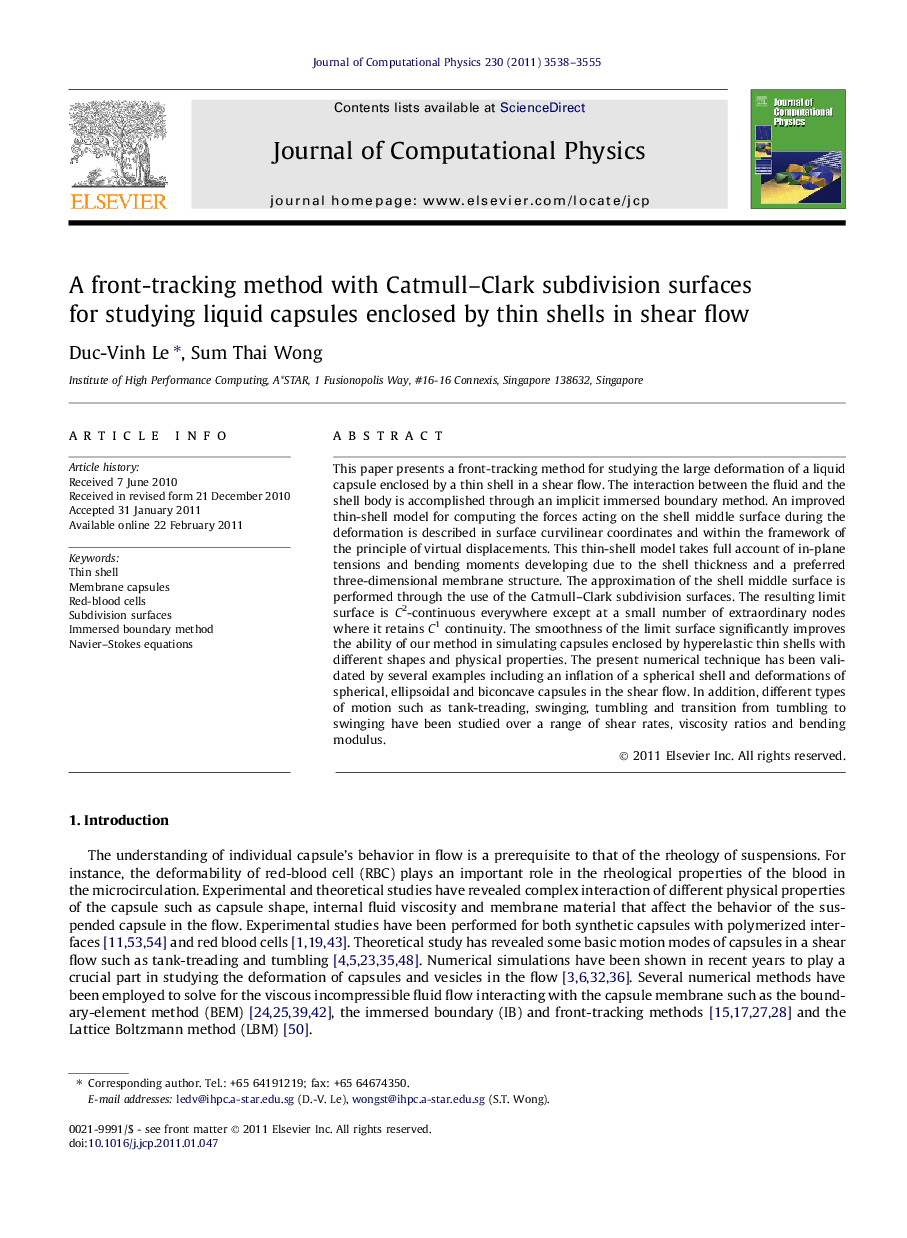| Article ID | Journal | Published Year | Pages | File Type |
|---|---|---|---|---|
| 519795 | Journal of Computational Physics | 2011 | 18 Pages |
This paper presents a front-tracking method for studying the large deformation of a liquid capsule enclosed by a thin shell in a shear flow. The interaction between the fluid and the shell body is accomplished through an implicit immersed boundary method. An improved thin-shell model for computing the forces acting on the shell middle surface during the deformation is described in surface curvilinear coordinates and within the framework of the principle of virtual displacements. This thin-shell model takes full account of in-plane tensions and bending moments developing due to the shell thickness and a preferred three-dimensional membrane structure. The approximation of the shell middle surface is performed through the use of the Catmull–Clark subdivision surfaces. The resulting limit surface is C2-continuous everywhere except at a small number of extraordinary nodes where it retains C1 continuity. The smoothness of the limit surface significantly improves the ability of our method in simulating capsules enclosed by hyperelastic thin shells with different shapes and physical properties. The present numerical technique has been validated by several examples including an inflation of a spherical shell and deformations of spherical, ellipsoidal and biconcave capsules in the shear flow. In addition, different types of motion such as tank-treading, swinging, tumbling and transition from tumbling to swinging have been studied over a range of shear rates, viscosity ratios and bending modulus.
